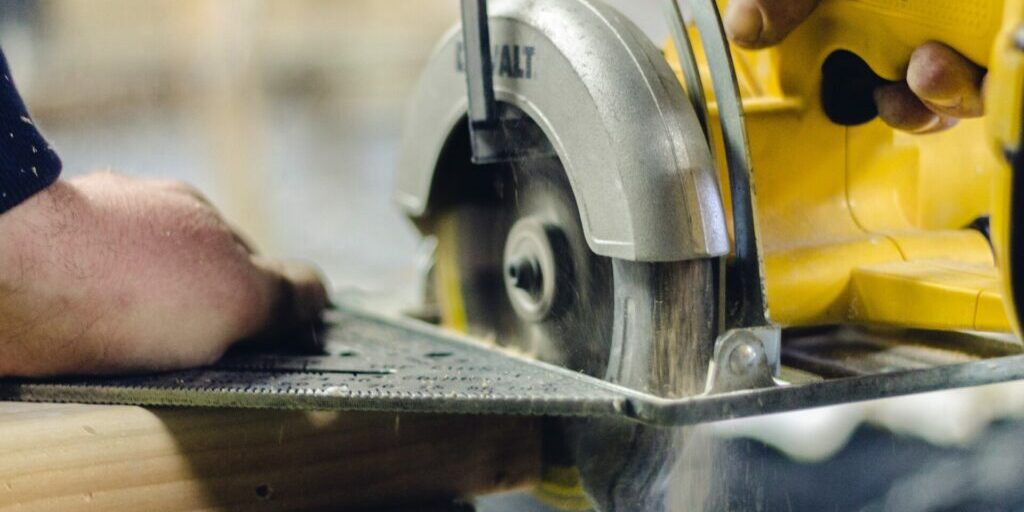Your Construction Safety Plan is Incomplete Without This Crucial Topic

Content Warning: This post discusses suicidal feelings.
The content of this article may be upsetting to some people.
If you or someone you know is stressed and struggling, please speak up or use these free and confidential resources:
- Dial 988 for the Suicide & Crisis Lifeline
- Call the Suicide Prevention Lifeline or 1-800-273-TALK (8255)
- Text “HEAL” to 741741 for the Crisis Text Line
We design our construction safety plans to protect our workers.
Our intent is to mitigate the safety hazards on the job site by bringing awareness to the common risks and dangers associated with construction work. And we communicate these risks through regular safety meetings, daily huddles, and toolbox talks.
But we may be overlooking one crucial construction safety topic.
OSHA’s Focus Four safety hazards are common discussion topics in our safety meetings because they cause the most injuries and fatalities on the construction site.
- Falls
- Caught-In or -Caught Between Hazards
- Struck By
- Electrocution
But there’s another occupational safety hazard that requires our focus too.
Perhaps we need to add another safety topic to the OSHA Focus Four because stress is an occupational hazard that affects everyone on the construction team, from management to the office staff and every worker on the construction site.
Here’s what we cover:
- Stress: The Silent Killer
- How does chronic work stress affect construction safety?
- Chronic stress at work and its adverse effect on mental health
- How to make mental health a construction safety topic
- How to Include Mental Health Check-ins in Your Construction Safety Plan
- Workplace wellness and construction safety are no accident
Stress: The Silent Killer
The construction industry is unique because our workers face social, physical, psychological, and financial stressors that people in other sectors may not.
Social stress:
Extended travel, long commutes, and time away from home
Construction workers, whether project managers, superintendents, or field workers, typically don’t have one specific workplace but instead travel to multiple worksites on demand.
Working on multiple job sites means long daily commutes, adding several hours to their work day each morning and evening.
Additionally, some projects are out of state, and workers must live and work away from their homes and families for extended periods.
Workers may need to share accommodations and ‘bunk up’ with their co-workers in hotel rooms or work extended shifts with no days off to minimize their time away.
Physical stress:
Physically demanding work in demanding conditions.
Construction work often involves working in awkward positions, lifting heavy materials, carrying awkward objects, wearing heavy harnesses and toolbelts, and carrying building materials up and down ladders, staircases, and scaffolds.
Construction work also requires indoor and outdoor work in every imaginable weather condition. From cold temperatures to scalding summer heat, management expects construction workers to perform no matter what.
It’s not uncommon for employees to work while injured or while sick. But, unfortunately, the construction industry’s culture frowns on taking days off for any reason, much less physical illnesses.
Psychological stress:
Looming deadlines and unrealistic expectations
Management expects construction teams to meet schedule deadlines those crews had little input in creating.
Management bases these deadlines on past performance and best-case scenarios, which are typically good benchmarks but not always possible to meet. Still, the deadlines loom, and the pressure to meet them remains.
It’s also not uncommon for workers to face material delays and physical or spatial conflicts which prevent them from completing their work assignments as scheduled.
When this happens, a supervisor will typically assign their team to work elsewhere on the construction site, but that means switching from one assignment to the next, with all the tear-down, set-up and stop and start thinking that goes with it.
Those interruptions stall momentum, sap motivation, and stress a construction worker’s day.
Hazardous materials and construction safety
A career in construction also means working in hazardous conditions and with potentially dangerous materials, which adds to the stress of working in this industry.
Materials such as asbestos, lead, silica, and harsh chemicals, can cause illness and great bodily harm. And the potential long-term health effects of working with these materials can weigh heavily on the minds of our employees.
Construction safety in hazardous conditions
Trenching operations are dangerous, and so is working while tethered to a tall building. And working from ladders and scaffolding both have their own sets of risks.
Construction workers learn to adapt to these working conditions, but the constant attention and hypervigilance required to do these jobs safely wear down their physiological capacity for stress.
Additionally, the construction industry was one of the first industries back to work after the government lifted the COVID-19 lockdown restrictions in early 2021. And the nature of construction means that workers are always close to different people daily.
The continual stress of potentially contracting the coronavirus and carrying it back to friends and family is another stressor we should consider.
Financial stress and construction safety:
Most construction workers are hourly employees, and their work is either seasonal or affected by the weather in one way or another.
Work demands can also fluctuate depending on how many projects a construction company wins or loses in its bidding process. As a result, employees are either laid off when work is slow or asked to work overtime when the workload increases.
The fluctuating work schedule creates financial insecurity for many workers, another ongoing stress source.
Another stressor for construction workers is the investment in tools they carry from job site to job site. Not only do they need to supply their own tools, but they also need to invest in a dedicated work truck to transport them.
Add to that the fuel, maintenance, and secondary travel expenses of this ‘toolbox on wheels,’ and we can see that these are financial stressors unique to construction.
Courtesy of Delamere Health LTD & Chartered Institute of Personnel Development (CIPD), UK
How does chronic work stress affect construction safety?
Multiple studies report that chronic work-related stress contributes to distraction, a lack of focus, and a loss of motivation.
Losing focus in a high-risk occupation such as construction spells disaster.
- Increased slips, trips, and falls leading to injury and death
- Rise in caught in and caught in between injuries and fatalities.
- An increase in ‘struck by’ incidents.
- Greater risk of electrocution injuries and deaths.
Additionally, as work stress accumulates, so do the health risks and resulting collateral damage.
- High degrees of the stress hormone cortisol increases the risk for cardiovascular disease, high cholesterol, and high blood pressure.
- Stress changes appetite and digestive patterns, leading to poor dietary habits, high blood sugar, and diabetes.
- Stress weakens the immune response, leading to chronic illness and injuries that do not heal.
Chronic stress and burnout are also associated with changes in mood and behavior, low energy levels, excessive coffee and alcohol consumption, smoking, drug use, and opioid abuse.
As a result, we have a weak, sickened, distracted, and increasingly drug-addicted workforce, resulting in high-risk behaviors, increased workplace injuries, and, sadly, higher instances of suicide than most other industries.
Chronic stress at work and its adverse effect on mental health
Research shows that chronic stress contributes to a severe decline in mental health, which leads to chronic anxiety and severe depression that can often lead to suicide.
For instance, a recent study published in the International Archives of Occupational and Environmental Health found that chronic stress strongly correlates with moderate to severe suicidal ideation.
Chronic stress, by the study’s definition, is remarkably similar to the stress construction workers experience every day at all levels of the industry:
- Psychological job demands
- Physical strain
- Low job control
- High job demands
- Low social support at work
- Job insecurity, and
- Long work hours
How to make mental health a construction safety topic
We must address the many causes of stress in the workplace and openly discuss these issues during our daily safety huddles and toolbox talks.
Creating a safe and healthy work environment needs to be the industry’s top priority if we ever hope to protect the skilled workers we have, attract more talent, and fill the gaping void in our shrinking labor pool.
How to Include Mental Health Check-ins in Your Construction Safety Plan
Daily safety huddles and toolbox talks are a great way to introduce mental health topics to normalize the conversation.
The Construction Industry Alliance for Suicide Prevention has over a dozen free, brandable toolbox talks to help.
These resources cover everything from mental health awareness, recognizing the signs when someone is struggling, initiating a conversation, and step-by-step instructions for how to use the Crisis Lifeline.
The resources are free and easy to access, and they take the guesswork out of addressing this sensitive issue in a comprehensive, caring, and professional manner.
Workplace wellness and construction safety are no accident
Contact Linarc today for more construction safety resources.
We want to help you prioritize construction safety in your organization for the benefit of your people, your construction business, and our industry.
Connect – Build – Thrive with Linarc construction management software.
If you or someone you know is stressed and struggling, please speak up or use these free and confidential resources:
- Dial 988 for the Suicide & Crisis Lifeline
- Call the Suicide Prevention Lifeline or 1-800-273-TALK (8255)
- Text “HEAL” to 741741 for the Crisis Text Line
- OSHA – Preventing Suicides in the Construction Industry
- Construction Industry Alliance for Suicide Prevention
- Substance Abuse and Mental Health Services Administration




